But he was still dead.
Rigor mortis already had set in when his fourth wife found him around 10 am, in his peach-colored $25-million Malibu mansion. Darcy-whose previous husband was action hero Jean-Claude Van Damme-had spent the night on her office couch. Mark's snoring, aggravated by apnea, had driven her from their bedroom. When Darcy had gone to wake him, before heading out with the kids to a dinosaur movie, she had pulled back the sheet and realized something was wrong. His back was white.
And Mark Hughes, one of the city's most visible multimillionaires, was known for his George Hamilton tan.
In Southern California, wealth and beauty are spiritual callings, needed to erase the error of self-doubt and to further lonely pilgrims toward high-gloss lives. Those who worship The Bod and The Beamer and invest faith in the power of the sales pitch and self-help seminar radiate an eerie, sunny joy. These kings and queens of rah-rah barely admit the existence of the sinister motives that twist through the Los Angeles landscape. They just smile at the greed, fake tits, bulimics, dominatrixes, and producers lusting after little girls. Or boys. And they try to fit in.
And they try to forget that they were ever fat, or poor, or insecure. And they transform their sufferings into parables of transformation, acted out by heroes who were once the most lost.
Mark Hughes was like that, the pop-mythic savior salesman who became the victim of his desire to create a life of perfect snapshots-and conceal whatever didn't fit in. Like the self-help guru that Tom Cruise played in Magnolia, Hughes was photo-op sexy (although his wide-eyed expression and pouf of hair also could bring to mind the Richard Carpenter, spacey Good Scout type). He could leg press 650 pounds in sets of twelve, kayak the Pacific on the choppiest of waters. And he'd made millionaires and multimillionaires out of thousands of his Herbalife distributors who sold the powders and bars and tablets that promised thinness, beauty, health.
"Mark exuded an almost childlike belief in his dream, and everyone knew this dream was not about him but about what he was trying to accomplish, says Michael Rosen, the former marketing director at Herbalife who met Hughes in a reform school in the seventies. Perhaps as well as anyone, Rosen understood the kinds of emotions that Hughes could produce in employees. "They saw his eye contact was absolutely direct and focused. He never was like When am I gonna get out of here? Mark had the ability to take people he identified as having the potential to be dedicated to his dream. He took you in and started to embrace you. Which is what we here call being Herbalized."
During the last decade, building his company on the faith of those he employed, Hughes achieved a net worth of between $500 million and $1 billion. His corporate headquarters was a prominent part of the L.A. skyline, a beige concrete rectangle topped by the green Herbalife leaf logo that was visible for miles when the smog was thin.
Hughes loved to build castles suited to the man his followers believed he was. The houses he shared with his wife, Darcy-his fourth marriage-included the $25-million Malibu cottage once owned by Verna Harrah, wife of the Reno casino magnate. Then there is Grayhall, his 2.5 acre Beverly Hills estate, already on the market for $29 million. Finished in 1919, this spectacular palace was leased by screen star Douglas Fairbanks, Sr. (Fairbanks used its secret tunnel to visit the site of Pickfair, which he was building for the legendary Mary Pickford.) When Hughes bought the place in 1992, he added three adjacent properties, bringing the estate's total square footage to 22,000. The main house has a master suite, four family bedrooms, padded music room, and walk-in vault. The ballroom, with its bar made from an original orchestra platform, has a hand-painted ceiling imported from a castle in Spain.
Mark's Dream, the Herbalife dream, was that Everyone could ascend to such a palace. Everyone could be healthy, slender, and on the way to getting rich. Everone. He Changed People's Lives. All Across the World. He took the dream beyond the 50 states and into Europe and South America and Korea and Japan and Russia. "Lose Weight Now Ask Me How" became a manta in dozens of languages, and Hughes's global army of 750,000 distributors still is growing the pyramid widening at the base.
Herbalife distributors saw Hughes as the messiah of positive life-change. No more fat! Lots more money! Hallelujah, brother! There was something in his personality and demeanor that attracted a certain kind of disciple, someone who would want to be like him. "Mark duplicated himself," one L.A. distributor told me, before breaking down into sobs over his death.
It seems safe to assume that he thought he and his dream would live on. But no formula yet can protect a binge drinker from the deadly interaction of the antidepressant Doxepin with booze. A pharmaceutical website describes Doxepin's interaction with alcohol in this way: "Alcohol ingestion may increase the danger inherent in any intentional or unintentional Doxepin HCl overdosage. This is especially important in patients who may use alcohol excessively."
According to the L.A. Coroner's Report, Hughes had been on a four-day drinking binge when he died. In addition to antidepressants, Hughes normally took Antabuse. This prescription drug-which causes violent sickness when mixed with alcohol-is given to alcoholics who wish to stop drinking. But, says the intimate associate, "Consistently, every two or three months, Mark [quit taking his Antabuse] and fell off the wagon."
But it is the use of Doxepin which causes Hughes's associate such grave concern. "Why would somebody give him this drug?" he demands.
Mark's associate says that he believes Hughes was on a binge the week before his death. But Hughes had another explanation. "He told everyone to leave him alone for a week," says the associate, "because he wanted to get Darcy pregnant. [He said] that she had taken the coil out...[That] may have been his initial motivation for staying home and not taking calls, but his free time was when he went off the wagon."
Hughes was hypersensitive to alcohol, says the friend. "Where it would take someone else six or seven drinks to get drunk, it would take Mark two," says his friend. "He would go unconscious, and people would freak out and take him to the hospital."
Hughes was arrested twice for driving under the influence in L.A. County. In November 1996, en route from LAX to a strip club called Bare Elegance, he was stopped for driving on the wrong side of the road in his white Jeep Cherokee. At this time, Hughes was sentenced to take a Level I First Offender DUI class. According to the official court report, he successfully completed the class and "developed a good plan to avoid any future DUI behavior." But records show he was actually arrested for DUI again-July 6, 1997, in Malibu-before he actually completed the "First Offender" program. At the time of his second arrest, Hughes was convicted and fined $677.
Hughes's close associates knew of his binges. And at least one believes Darcy was also aware of them: "We discussed the problem in the middle of a bing," the source says. "He was so in love with Darcy and she with him, when all of a sudden, she realized this great-looking, kind, sweet guy had a problem."
On the night before his body was found, Darcy and Mark had been celebrating his grandmother's 84th birthday. But the blood-alcohol level found in his body (.21) was nearly three times the legal limit for driving in California. "He sat back, kicked his shoes off, and put his feet up on the table as we were talking, and he started to fall asleep," Darcy recalls. Twice she tried to get him to go to bed. "I said, 'Daddy, go to bed now' and he said, 'Nope, Mama. I'm gonna sit up and smoke a cigar and then go to bed.'"
Thirty-five-year-old Darcy Lynn LaPier Robertson Rice Van Damme Hughes, a somewhat synthetic beauty, is talking about the last time she saw her husband alive.
Darcy descends the curving staircase in slippers, a white shorts-and-jacket outfit and tight flowery pullover. Our first stop is Mark's office, a two-room suite on the first floor with a "Do Not Enter" sign dangling from the doorknob. The walls are lined with leather-bound books. Glancing at The Diary of Samuel Pepys, I asked if she and Mark read the books. She says they were just part of Mark's antique collection. This collection also includes a pair of antique chairs that no one is supposed to sit on. Darcy, however, disagrees with this policy. "I say, hey, what's an antique for if you're not going to use it?" she drawls.
The loafers Mark kicked off before he died still lie at the foot of a chintz-covered armchair now blocked off with potted plants-a blue suede shrine in the living room where there are price tags on some furnishings. The stickers are part of the estate's appraisal effort. No one will say whether much of the deceased's chattel is on the verge of being sold off.
Darcy expects to stay put at the Malibu estate, which the Hughes trust has not put up for sale. But the upkeep on the $25 million cottage may drain her inheritance. Her take currently stands at $10 million, as 8-year-old Alexander Hughes (Mark's son with his third wife, and his only child) is his father's main heir. The will itself has not been made public. However, a trustee told Details that Hughes amended the document on February 2, three months before he died, to give Darcy the $10 million with 45 days of his death. The couple, trustees says, had agreed on this before marrying. The fact that no provision was made for Hughes's yacht, the 150-foot Shamwari, opens the door for a lengthy probate. Strangely enough, negotiations may be more peaceful than expected. The Hughes estate is represented by none other than Robert Shapiro, the attorney who helped keep O.J. Simpson a free man, and Darcy enjoys a cordial relationship with him, as he's represented her in other matters.
Darcy may well wind up staying in Malibu. Even though the place reflects her late husband's cultivated tastes, her own more spontaneous personality comes through. Framed family photos fill all the available space among the vast array of antiques and gilt mirrors and framed paintings. One shows two Indian women in the early twentieth century, whom Darcy identifies as a great-grandmother and an aunt. She points out that she has the same finely shaped lips. "They were Cree," she says. When I comment about her heritage she nods and adds, "When I was a kid I wasn't real proud of it."
Darcy, who grew up on a small Oregon farm, has a rough history few articles have fully explored, including her most recent interview with Talk magazine.
She is the daughter of a Cree Indian, a man her mother describes as absentee when she was a child. Darcy dropped out of high school after the tenth grade. She went to work in a drug-counseling clinic in Portland where, according to her first husband, Larry Ray Robertson, who gave testimony in a later legal proceeding, she herself became addicted to cocaine. She met Robertson at a Tequila Willie's in Portland, he later would tell the court, and they repaired to the parking lot: "I said I had the champagne and she said, 'I have the cocaine.'" Larry Ray also offered that his now ex-wife both snorted and free-based coke. ("I did not use drugs," Darcy told Details, denying most of Larry Ray's statements.)
According to Larry Ray, the couple hopped into their Porsche 924 and headed to Phoenix to get away from the drug scene. "People with guns started coming around," says Robertson. They got married in 1986. But, by this time, it wasn't gun types whom Darcy, now an X-ray technician, wanted to meet: After Larry Ray financed plastic surgery on her breasts-which she does not deny-she developed a whole new set of ambitions. "She was really flat upstairs, but once she got the operation her whole personality changed," says Robertson, who was working as a male stripper. "She realized she had all she needed to go where she wanted. She really wanted to marry someone rich and famous." Darcy started entering beauty pageants, enjoying some success as Miss Miller Lite and Miss Phoenix Raceway.
Using an entry blank from a grocery store display, she sent her photos to Hawaiian Tropic, where Darcy has said, the company's chairman, Ron Rice, personally reviewed them and sent her airline tickets. After that, Larry Ray saw little of Darcy, who was crowned Miss Hawaiian Tropic shotly thereafter. She took up with Ron Rice, who believed he'd married her in a million-dollar Daytona Beach wedding in 1990. But Details has discovered that just two years later, Rice found out that she not only was having an affair with action hero Jean-Claude Van Damme, but she was a bigamist, too.
"The private eye said, 'I have good news and bad news,'" says a close friend of Rice's. "The bad news is she's having an affair with Jean-Claude Van Damme. The good news is you are not legally married because she's married to someone else."
"Ron was madder than hell," says the friend. His attorney advised him to get a paternity test on the couple's child, Sterling. As he set about the have the marriage annulled, Rice did ascertain that his daughter was, in fact, his child. The couple shared custody of Sterling, but in 1998 the courts ruled that the child should live during the school year with Rice. It did't matter that Darcy was claiming in court papers that Rice was trying to turn the child into a "mini-model," alloing her to appear in a bathing suit on the Montel Williams show and teaching the 8-year-old how to use a knife to stir the bubbles out of champagne. (Rice admitted in court papers that he'd allowed the child to sip alcohol on a few occasions.)
The marriage between Darcy and Rice was annulled because Darcy and Robertson filed the initial petition but never had returned to the Phoenix divorce clinic to complete the paperwork after the stipulated sixty-day period. Rice's attorney, Jonathan Kaney, adds that the Flordia judge who handled the annulment, Patrick Kennedy, kept an exhibit from the case to hang behind his chamber door. It is a photo of Darcy in a low-cut dress with Van Damme on one shoulder and Rice on the other.
Darcy's 1997 estrangement from Van Damme also drew attention when Darcy accused the famous muscleman of being a cocaine addict and a homosexual who'd abused her. Van Damme-who went on television and denied as "ridiculous" that he was a homosexual-claimed that Darcy had been sleeping around. He publicly proclaimed his desire for a paternity test on the couple's son, Nicholas. After drug rehab, he stated that he wished he'd never left his previous wife, Gladys, "for Darcy and the party lifestyle and the drinking." Van Damme and Darcy officially divorced in 1999.
Darcy fled back to Ron Rice with her young son by Van Damme (and Rice has said Nicholas Van Damme was soon calling him Dad). Darcy met Mark Hughes in 1997 on a blind date. At the time, he was recovering from a rocky divorce from another pageant queen, the former Suzan Hughes, a Brooklyn-born court reporter who is the mother of Mark Hughes's only child, Alexander, born in 1992. Like Darcy, Suzan once reigned as a Miss Hawaiian Tropic.
Darcy contends that when she met Hughes she never had heard of him or his fortune. "I didn't know anything about Herbalife," she tells me. "I'd only been around suntan oil and movies," she says, before adding, excitedly, that the two clicked from the very start. He invited her to cruise the south of France on his yaught. "We both went Wow," she says. "We were both smitten. We had the same wants. He wanted a family and I'm a ready-made family. I wanted to stay at home and do the Mom thing, and he wanted that more than anything."
Darcy and Hughes were married nine years after her so-called marriage to Ron Rice. They took their vows on Valentine's Day 1999, in a Beverly Hills church that Hughes had filled with 700,000 airlifted South American roses.
For Mark's memorial service, there was a rose left on every seat of L.A.'s Shrine Auditorium, site of the annual Oscars broadcast. Stepping to a podium in a black, very low-cut dress, she sobbed, "He loved you more than he ever loved me!"
Asked about that remark, she says: "I was just trying to make them feel better."
She says she and Hughes had "a soulmate connection" and describes preparing his body for burial. "I sprayed his tuxedo down with the cologne he created and loved-called Pinstripe-put a rose in it...a lock of my hair inside [the pocket and] put in a love note. In a dream that night he came to me and told me how much he loved me. He said, 'Mama, you're the best.'"
Darcy denies Mark was on a drinking binge at the time of his death. "I think that statement [the coroner's report] was hearsay," she tells me. She says that it originated with a housekeeper who "was all upset."
"From the first time I met him he was definitely not a drinker," Darcy continues. "I think out of jealousy a lot of people try to say this and that." She says that she never saw her husband drink anything stronger than champagne-and that in moderation. "He wasn't a drinker from the time he was with me," she says, with a wide innocent brown-eyed gaze. "He was different. I've heard things, but that's not the Mark I knew."
Darcy confirms that Mark had stayed home the week before he died to make a baby with her. "We were checking ovulation and all that," she says.
Mark, whose own weight-obsessed mother died of diet-drug abuse, called Darcy Mama because, she says, that's what he wanted her to be. Hughes even had the words "Mama Loves Daddy Loves Mama Loves Daddy" engraved inside his wedding band-which Darcy had downsized and now wears. The nicknames were just part of a larger attempt she and Hughes were making for a normal life together. "I already had a big life and all I wanted was him and the children. We got some dogs." But she had other yearnings, too, as she tried to move her husband a little beyond the Herbalife set. "I wanted to incorporate another world around him, to let him see how much bigger the world really is."
Part of this included sharing her spirituality with Mark. "I taught him how to pray. Because I cam from a Baptist Assembly of God background-Pentacostal and holy roller. He had gone to Catholic church sometimes. I had said, 'Mark, all you do is ask God for forgiveness for what you think you've done wrong. Thank him for everything you have and ask him for what you want.'"
Darcy admits that since Mark's death, she's been depressed. She tell sme she feels herself moving away from Mark "in a physical sense." She plays videotapes of his seminars to keep him with her. "I guess that is all part of letting go. One part doesn't want to, and another says, 'This is what happened.'"
The person whom Darcy and most people knew was a genius at painting all kinds of pictures just as perfect as the one he was helping to create.
According to Michael Rosen, Hughes always was looking for a beach of pure white where he could anchor his yacht. Like many of the ambitious future addicts of wealth and fame who come to L.A., Mark Hughes was obsessed with images rendered in dreamy designer dimensions. Always hyper-conscious of appearances, he never stopped working on his own. "After he married Darcy, he started trying to shape his body," says former employee Rosen. "He was much more conscious of wanting to be in shape because of her. She's all toned up, and he wasn't."
Hughes loved beauty queens, shiny toys, images buffed with chamois beyond belief. He favored the kind of classic suits-custom-made by Brioni, worn with a diamond tie-bar-that are chosen by elegant gentlemen who always would be more right than he ever could be. He thought that land might provide the kind of stability that grounded those men; he was obsessed with property and finding a castle perfectly suited for his kingdom of perfect beauty. Hughes owned $100 million in real estate, including the Malibu mansion where he died, and Grayhall.
But he was never quite content with his palaces, which he continually attempted to enlarge and improve to fit his expectations. According to his former real-estate attorney, Conrad Klein, who is one of the trustees of Mark Hughes's estate, 'every house Mark had was being remodeled, and he cared about every detail, down to the length of the cornices."
He drew pages and pages of plans for his architects. "He would travel the world to find things to fit perfectly into that spot in his house," says John Tartol, a former rock musician who is one of Herbalife's major distributors.
At the time of his death, Hughes was working on a 45,000-square-foot Mediterranean villa atop a 157-acre parcel of land that is the last undeveloped mountaintop in Los Angeles. Hughes bought the property in Benedict Canyon from Merv Griffin for $8.5 million. His masterpiece, he announced, would be surrounded by a wildlife refuge. But Hughes's future neighbors were up in arms at the prospect of large numbers of distributors choking the road with their cars and trooping up to the palatial residence. The concerned citizens took Hughes to court, opposing the construction of his masterpiece on the grounds that the height of one of the castle's turrets-planned for 65 feet-exceeded the city's regulations.
A scale model of the Benedict Canyon villa is preserved under glass in Hughes's office at the Malibu place. New York architect Charles Young designed the $50 million house, which was to match the size of the Heart's San Simeon and the have included 25 rooms, a tennis pavilion, and million-gallon pond. Hughes's desire for the biggest and best had become a family joke, says Darcy LaPier's mother, Wilma Harrington. After his death, his stepson, Nicholas Van Damme (now calling Mark Hughes his father), said, "Daddy's up in heaven smoking a cigar and saying we have to make that house bigger!"
In an effort to placate the Benedict Canyon homeowners, Hughes invited some of them to a Christmas party at Grayhall. The king of appearances, however, didn't make a very good impression. "He came downstairs for a few minutes and had nothing to say, and he had this dyed hair and all this makeup on," reported one attendee. "He looked like a mannequin."
The dreamer had become a mannequin, ready for display in the greatest store window that Los Angeles will now never see. Behind Mark Hughes's perfect picture, there were dark negatives-and secret rebellions.
Although he had a big life, he never lost his taste for the small. When he won a million dollars at baccarat in Vegas during the millennium New Year holiday, he had the money delivered to him in paper bags just for the fun of it. He and his wife and kids played with the money for a while in their suite at the Bellagio, where they were lodged between Rupert Murdoch and Bill Gates. Then he took his wife and kids to Taco Bell, his favorite fast-food spot, for bean burritos before boarding the private jet back to L.A.
At times, it was as if there were someone different under the Brioni suit. As the circumstances of his death attest, Hughes was a good-timer, a party animal. Darcy and other friends remember that he loved dirty, dirty jokes. Tartol, who worked with Hughes sinces just after the company's inception, says his late friend "would repeat the joke of the day over and over."
One of Hughes's venues for the kind of partying he did in public was his yacht, Shamwari, bought from the arms dealer Adnan Kashoggi. "He loved his boat," Tartol says. "He had it on the Mediterranean when the company hosted the World Music awards, and he had this monstrous party. It was spectactular. Every star was there. Including Pamela Lee and Tommy Lee." Tartol recalled that just before the party, Hughes was told there was only a limited amount of Cristal champagne. "He said, no, just go throughout the whole South of France, use a helicopter, go out and find every bottle Cristal you can find."
But Tartol, who calls his late colleague "a total class act," claims he never saw his friend overindulge.
That was strictly kept behind the scenes-in Hughes's past, where the restaurants were always Taco Bells and the jokes often were of the kind that gentlemen of his public stature were loathe to tell. To understand Herbalife and the life and death and messianic power of its late founder and CEO, one must envision the druggy scene of the seventies and then go back to the less-than-perfect place where Mark Hughes lost his mother and his childhood.
Mark Hughes emerged from a place where people believed that ingesting special substances could make themselves and their lives better than real.
He was born January 1, 1956, to Jo Ann Hughes and Jack Reynolds, who had split before he was born. Jack, a plumbing contractor, moved to Hawaii. Mark had no relationship with his father for most of his childhood. Later, the two would grow close enough for Mark to name Jack Reynolds one of three company trustees in his will.
I speak with Reynolds in his son's old office at Herbalife headquarters in Century City, where the leaf symbol on the company logo high above the city vaguely reminded me of a marijuana plant. Reynolds has the craggy looks of the Marlboro Man, but he probably lights up a little more frequently. He told me a little about Mark's childhood and his own divorce from Mark's mother. "Jo Ann had already decided who she was going to remarry during the divorce," Reynolds says. "My agreement with her was I wouldn't have any hand in the raising of Mark. We reconnected when he was 17."
Reynolds recalls that Mark took the Hughes family name because as a boy his grandparents formally adopted him-maybe because they knew their daughter's son would need their help as much as she did. Jo Ann Hughes, an attractive brunette in the promotional picture released by her late son's image-conscious company, suffered from what Mark delicately called emotional problems. Like so many women who find themselves in California among the young and slender, she was weight-obsessed and became addicted to weight-loss pills. Speed, in other words. But in order to sleep, she began taking downers as well. This cycle eventually killed her.
Mark Hughes turned to story of Jo Ann, a woman who wanted so much to look like the beauty queens her son would marry, into a motivational parable that would inspire countless Herbalife employees. He often said he was selling healthful, nutritious weight-loss products because he didn't want anyone else dying like his mother had. But by the time of her death, her son already had been taken from her: The eighteen-year-old was in reform school.
Mark, the tough little boy with the mother who was absent long before she actually went away, grew up in a Hispanic L.A. neighborhood called La Mirada. By the time he was 13, he was-according to his widow-"running the neighborhood." By his early teens he was involved in narcotic use. When he was 16, the law caught up with him, and an L.A. juvenile court sentenced him to a school for troubled teens in Running Springs, California. It was called CEDU.
As California Cool as a reform school could be, CEDU was the pet project of a former businessman named Mel Wasserman. The students there engaged in group therapy sessions known as "raps." (Wasserman says the school's name came from these see-do sessions where the kids critiqued each other's attitudes and kept each other in line.)
"See yourself and do something about it." Or so they used to say.
Some people actually had assumed that CEDU stood for Charles E. Dederich. He was the recovered alcoholic who founded the legendary drug program Syanon, where junkies rehabbed on the California beach; for a time, Mel Wasserman was associated with Syanon in a sponsorship capacity. By the early seventies, when Mark entered CEDU, Synanon had become a haven for stars and jazz musicians. Thousands of addicts signed on for its sessions, which were known as "The Game" and which some have compared to Mao-inspired "re-education." As Dederich became more successful, he began to order followers to marry spouses he selected and leave children from earlier relationships.
Werner Erhard's star-studded EST sessions-a confrontational therapy phenomenon in Southern California, which in the eighties changed the lives of attendees such as David Geffen-drew some inspiration from Synanon. So would Mark Hughes's massive indoctrinations of Herbalife employees. (Neither matched the extremism of Dederich, who once put a rattlesnake in the mailbox of a threatening attorney.)
When asked to discuss whether Syanon impacted The Education of Mark Hughes, Mel Wasserman replies that, in addition to Synanon techniques, he also used his own experiences in conventional therapy to mold his program. He also says that he was not a fan of Dederich, whose sessions could get brutal and assaultive. He was aiming for something warmer: "There was a lot of conflict between me and some of the people I hired from Synanon. They wanted to redo Synanon. I didn't want a place where we had so much power that people would pee in their pants when you walked by. Synanon was fear-based. Our work was feeling-based."
One aspect of CEDU that was reminiscent of Synanon that was reminiscent of Synanon was the school's money-making acumen. By the early seventies, Synanon had recycled its trippy, quasi-spiritual rehab techniques into a very successful fund-raising program. Synanon molded its members into an army of fund-raisers-called "hustlers" at the time-who went door to door from corporation to corporation, persuading people to hand over money to help keep addicts off the streets. In this spooky, sometimes scary period of revolution, such a project seemed pretty attractive to corporate squares, who shelled out big bucks. CEDU's students were encouraged to open their minds to letting the cash flow. "Wasserman was trying to develop what we had in Synanon-a hustling system where we would send out our own people to heads of companies and ask for money," says D.D. Harvey, a Presbyterian minister and former long-time Synanon member. It was this fund-raising mania that launched Mark Hughes.
The man who headed up CEDU's fund-raising program, Michael Rosen, eventually became director of marketing at Herbalife. (He held the latter post at the time of Hughes's death.) Rosen arrived at CEDU in his early twenties, after a stint at Synanon for drug problems. At CEDU, Rosen watched gawky but attractive Mark Hughes distinguish himself. "We were taking kids all over, to Palm Springs, to San Diego [and] Beverly Hills. We were a traveling gypsy group. We had lots of fun, tremendous times. Working hard was something we definitely taught."
Rosen says he made the boys under his watch get up at 8 a.m. and walk the streets until 5, then go out again after dinner. The teens went door-to-door, describing the school's projects. Mark, according to Rosen, "immediately changed from a kid wearing T-shirts, blue jeans and long hair to someone who groomed himself." Says Rosen: "We told all the kids to groom themselves and get clothes but he just looked better than everybody else. He was a good-looking kid and he became the No. 1 salesman within the first month or two."
CEDU provided Mark's formative professional model, although he never got a high-school diploma. "They put him in a suit and gave him a briefcase and he would go to the mansions of Beverly Hills; and, seeing them, that's when he decided that's it, I'm going to be that way," Darcy says he told her. It also gave Herbalife some valuable talent: Wasserman and Rosen assert that current Herbalife CEO, Chris Pair, was a one-time CEDU inmate who went on to counsel other inmates. (Herbalife executives will neither confirm nor deny this, offering only that Pair was "an intern" at CEDU during college, and then was employed there between his junior and senior years.)
Hughes, just out of CEDU, met his future first wife, Kathryn Whiting, on the beach on March 22, 1979. By March 27, they had moved in together and he had given her a diamond ring, which she wore on her left hand-except when he borrowed it to wear to business appointments.
At the time, he was working for a company which manufactured health and diet concoctions. Its president was Larry Huff, who'd spent two years in Lompoc Prison for bilking 27,000 people in a Ponzi scheme. When that company went belly-up, Hughes often said that Huff refused to pay him money he was owed. So in 1980, Hughes decided to go into business for himself. Using Huff's products for inspiration, he forged his own, adding-or so Kathryn would later claim in a lawsuit-herbs "as a gimmick." (Herbalife denies that herbs are a gimmick in its products.) Huff later made up with Hughes and went to work at Herbalife, where he was as recently as the mid-nineties.
Kathryn, who was studying for a B.A. in medical science and business, abandoned her studies to help Mark breathe life into Herbalife. She became his secretary, as well as the test subject for the powders he sold from the trunk of his white Cadillac. Hughes got rich quick: In his first year he grossed $2 million, in his second $10 million and in his third year $58 million. But, by that time, he and Kathryn were splitting up. Kathryn, however, claimed in a lawsuit that she was integral to Herbalife's inception. She charged that it was she who thought of the company name and created the distributor sales force. She sued Hughes for company proceeds and property. (She did not return calls for comment. Herblife officials say they don't know whether her lawsuit was resolved.)
Hughes and Kathryn were divorced by 1984. But Hughes wasn't single for long: His new wife was a 23-year-old model and beauty-pageant winner named Angela Mack. They had met at a disco. "I think it lasted over a year, maybe a year and a half," recalls Wilson. "It was an unfortunate thing. She had problems and they didn't get along. She went back to Sweden."
This brief marriage to Angela Mack was followed by Mark's wedding to Suzan Schroder in 1985. The new Mrs. Hughes was a poor girl turned pageant winner and court reporter. She dropped her own career in San Francisco when she met Hughes. Suzan started working informally with Herbalife. As a model, she appeared on brochures for a cosmetics line and a perfume called "Zillion." She also headed up Herbalife's children's charity foundation. At Christmastime in 1988, Mark bought her a 1985 Silver Spur Rolls Royce.
In 1992, she gave birth to Alexander. Soon, the family of three was settled at Grayhall. Despite the luxurious trappings of her life, Suzan complained to Cosmopolitan magazine in 1997 that being a rich man's wife was no picnic. She said she would have been happy in a house of a mere 11,000-square feet and downplayed Herbalife as "more my husband's dream." But friends say she was deeply in love with Mark. According to them, her discontentments came not from the pressures she aired in print, but from her husband's drinking and obsession with work. "The marriage was failing long before she actually filed for divorce in 1997," says one close friend.
These days Suzan-a classic Hollywood blonde with acting aspirations-lists among her credits appearances on Mulholland Drive, America's Most Wanted, and Matlock. She declined (on the advice of her attorneys) to talk about her divorce, which was protracted and which led to a custody battle over Alex. For a time, Suzan engaged L.A. attorney and private detective Anthony Pellicano, who has worked for both Michael Jackson and O.J. Simpson.
The marital settlement agreement, which Pellicano helped arrange, left Suzan with alimony and a Hughes-purchased house on Beverly Drive. But these winnings came with a restriction, an agreement that states she loses both the house and the cash if she "disparages" Mark Hughes. The court-negotiated definition of disparagement left Suzan unable to discuss her ex's "wealth or any other habits that you think he has which are inappropriate, whatever they may be."
This did not keep Suzan from talking about Darcy, who replaced her as the First Lady of Herbalife (even as Suzan then started dating Jean-Claude Van Damme). Hughes's final wife made appearances to promote an Herbalife makeup line called Colours. Distributors in L.A. were fixated on the battle of Mark's wives; details of their feud made it into the court's Hughes divorce file, which includes a letter from Darcy's attorney threatening legal action against Suzan's "stalking" and libelous remarks. In the letter, Darcy's attorney charged that Suzan called Hughes and Darcy at their Maui estate sometime during the couple's engagement and asked Mark if Darcy was "raping our son."
"Ms. Hughes has continued to make false accusations that Ms. LaPier is a 'child molester,' 'child abuser,' has 'a drug problem,' and 'uses cocaine'" the letter continues, adding that Suzan sought information about Darcy's children from their schools, called Darcy's ex-husband Jean-Claude Van Damme and sent letter to Mark Hughes again "making false accusations about Ms. LaPier." Darcy's lawyers wrote that they had prepared a formal police report and threatened to file libel and slander suits.
Suzan's divorce attorney, Scott Westin, says he was "surprised" to hear that letter was in the public record and claims that the charges in it were a misunderstanding that has been worked out.
Mark Hughes is gone, but he lives on in the multitude of videotapes made of the grand spectacles he called "trainings," in which tens of thousands of distributors packed major venues for slickly produced floor shows. These events featured luminaries including Elton John and the Tonight Show orchestra. Hughes would step out on stage to triumphant music, grinning like a game show host at his thousands of distributors all dressed in their Sunday best. Sometimes he would bestow a million dollars on some formerly obese, weeping distributor who "qualified"-ironically, a term taken from Alcoholics Anonymous. All would rise en masse and roar with the power of Mark's big, big dream.
These rallies, conducted around the world during the last two decades, were broadcast on the USA cable network and later on Herbalife's own cable network. One Herbalife distributor showed me one of her tapes which features, after the company's familiar green logo, an opening segment replete with American flags, fireworks, Donny and Marie, and Ronald Reagan footage. Reagan-as the Hughes legend goes-once gave the teenage Mark a life-changing check for $500.
Hughes saw the personal contact as a powerful carrot for his sales forces. The distributors were so enamored of him that they competed for the opportunity to get their picture taken with him, to get invited on cruises with him, to be entertained in one of his fabulous houses. Some paid thousands of dollars of their earnings to have dinner with him.
But in the mid-eighties, Mark Hughes had more to worry about than keeping his employees happy. Herbalife had to deal with Food and Drug Administration concerns about its products and business. In 1982, the FDA charged that Herbalife products contained pokeroot and mandrake, herbal ingredients the agency deemed unsafe. Dr. John Renner, a medical expert wary of the company, said at the time that products containing "herbs that cleanse"-which Herbalife still makes-merely contained powerful natural laxatives and that the billing was "pseudoscientific doubletalk." Herbalife removed the mandrake and pokeroot and took two products off the market for which they'd been making medicinal claims, satisfying the FDA.
Next, Herbalife was hit by a suit brought by the state of California. Herbalife was charged with using "an endless chain" marketing scheme, sometimes called a pyramid. A year later, Hughes settled with California for $850,000. One of the attorneys who brought the suit says Herbalife was forced to change its marketing methods and prove to the state that it was selling a product and not just bringing in more distributors. "A multilevel is not illegal," says California Assistant Attorney General, Al Sheldon. "What is illegal is the basis on which people get paid. If they get paid purely for bringing in more people, that is illegal."
For years, Hughes proved he could take on all the company's doubters, even those with more power than the FDA or the state of California. Part of the Hughes legend-preserved on videotape and replayed often on Herbalife broadcasts-is Hughes testifying before a Congressional committee. Then a longhaired 29-year-old millionaire, Hughes challenged experts who testified that his products were either useless or dangerous: "If they're such experts, why are they fat? I've lost 16 pounds in the last few years!"
During the last year of his life, Hughes suffered some serious health and business difficulties. It was as if Hughes was trying to swim away from the maelstrom that was his business life. He was trying to spend less and less time in the office. But whenever he'd attempt to retreat, things had a way of going awry. In 1998, he even tried to jettison a quarter of his Herbalife stock-of which he owned half. This caused the stock price to plummet.
Then in 1999, Hughes offered to buy back all the company's stock in a leveraged buyout opposed by stockholders because the offer was too low. In April, a month before his death, he announced that he had failed to find financing.
He'd also decided to change his will. The amended version set up the trustee arrangement with the triumvirate of CEO Chris Pair; lawyer Conrad Klein; and his father, Jack Reynolds. The trustees have ultimate voting power over the stock and the company. The chief beneficiaries of the will are apparently Alex, Darcy and other Hughes family members. But Herbalife's future looks somewhat clouded. Hughes's untimely death can't help distributors sell the product that Hughes said made him what he was. Furthermore, the market may be saturated, with Europe and Russia already topped out. Asia remains a hope, and distributors in kimonos now routinely appear to give testimonials at big Herbalife rallies. Herbalife reported lower second-quarter earnings in the wake of Hughes's death, which officials blamed on soft sales in Japan. There are rumors that buyers are circling. Company officials deny this and say the company's not for sale. India and China are also possible areas for growth. But who will spread the gospel now that the angel of prosperity is gone?
Herbalife is now formally headed by Chris Pair. The new CEO is a slight, ponytailed man in his mid-forties. He swears that he once lost 50 pounds on Herbalife and is described in the annual report as having served in various management positions in U.S. Leasing, Raytheon Data Systems and Consolidated Foods. In an interview, Pair says he believes Herbalife can thrive even without Hughes.
But some observers beg to differ. And there are dark whispers about Mark Hughes's last months. "Mark ran the company on trust," says one insider. "When you are dealing with the kinds of numbers we had-the millions-the intrigue starts. His alcohol problem put him in the position of trusting too much. And Mark's whole life was riddled with people who took advantage of him. His point of view was always, I'd rather be the guy who gets screwed that the guy who does the screwing."
But whatever happened, he would keep up appearances. Rarely did anything look wrong. The beauty queen smiled in the pictures. The castles just kept getting bigger and bigger. No one ever really knew how hard it was for Mark Hughes to keep up the impression that he and his kingdom always would thrive. Hughes had pneumonia twice this year. He contracted it first during a business trip to Japan in January. He became ill again in February. That same month, as his buyout plan looked less and less realistic, he took steroids as he prepared to address the Herbalife 20th anniversary gala in Los Angeles. Twenty thousand distributors watched as Hughes, sweating profusely, mounted the platform for a four-hour oration that convinced them of his near-immortality.
Backstage, he'd stashed an oxygen tank. But as the crowds roared their approval, he smiled.

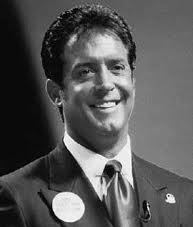


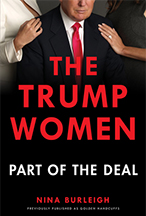
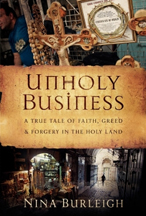


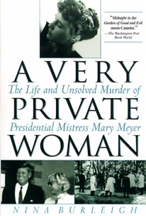
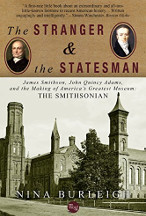

Did Mark ever attend Las Posas Elementary School and live in Camarillo, CA?